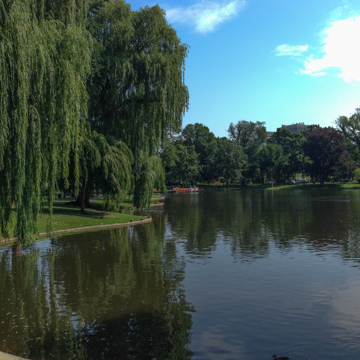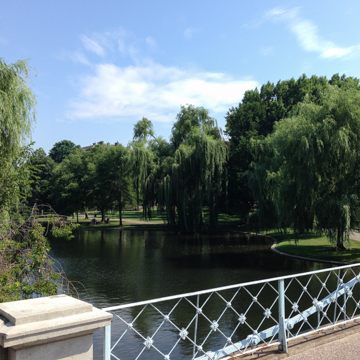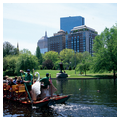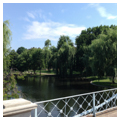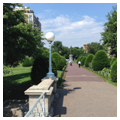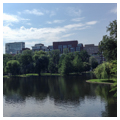The Boston Public Garden is the most artificial of Boston parks, a horticultural effusion of specimen trees and carpet bedding. George F. Meacham designed a picturesque urban pleasure ground in the manner of contemporary parks in Paris, replacing a private effort to create a horticultural garden on the site of ropewalks that had been destroyed by fire. Originally, the park was to contain spaces for a children's playground and a new city hall. The centerpiece is a serpentine pond where ducks swim and the swan boats, introduced in 1876, glide gracefully throughout the summer. Boston's Valhalla, the park contains myriad statues of local and national heroes, including Thomas Ball's equestrian statue of George Washington (1867) looking toward the Commonwealth Avenue Mall. The Ether Monument (1867, Ware and Van Brunt with J. Q. A. Ward) in the northwest corner memorializes the first use of anesthesia in an operation performed nearby at Massachusetts General Hospital. The Make Way for Ducklings figures (1987, Nancy Schon) please a younger clientele, the readers of Robert McCloskey's children's classic. For all, the Friends of the Public Garden ensure that this park is one of the best maintained in the city.
You are here
Boston Public Garden
1859, George F. Meacham; 1866 bridge, William Gibbons Preston and Clemens Hershell. Beacon, Arlington, Boylston, and Charles sts.
If SAH Archipedia has been useful to you, please consider supporting it.
SAH Archipedia tells the story of the United States through its buildings, landscapes, and cities. This freely available resource empowers the public with authoritative knowledge that deepens their understanding and appreciation of the built environment. But the Society of Architectural Historians, which created SAH Archipedia with University of Virginia Press, needs your support to maintain the high-caliber research, writing, photography, cartography, editing, design, and programming that make SAH Archipedia a trusted online resource available to all who value the history of place, heritage tourism, and learning.















